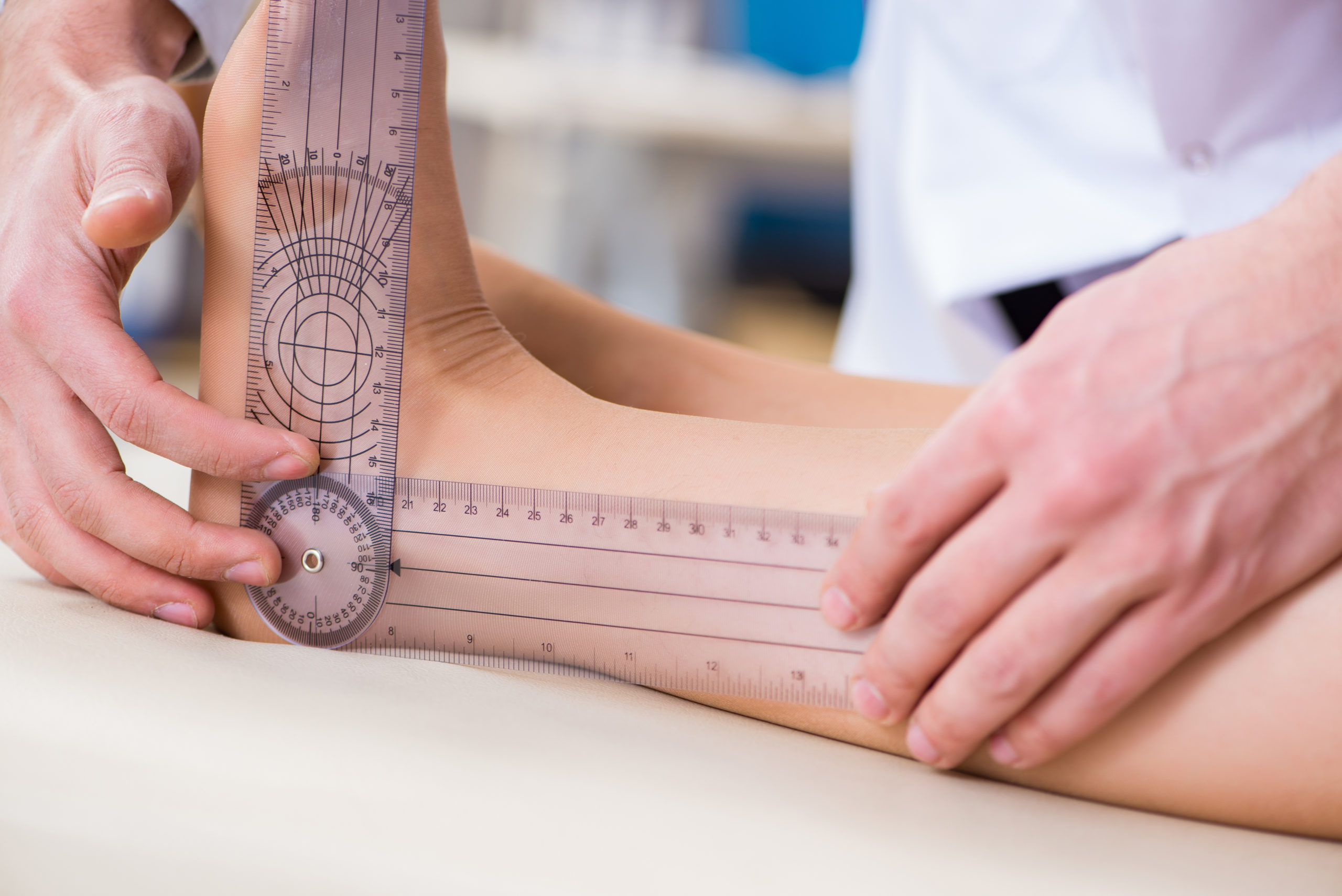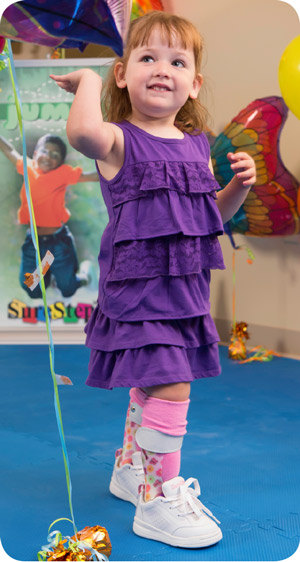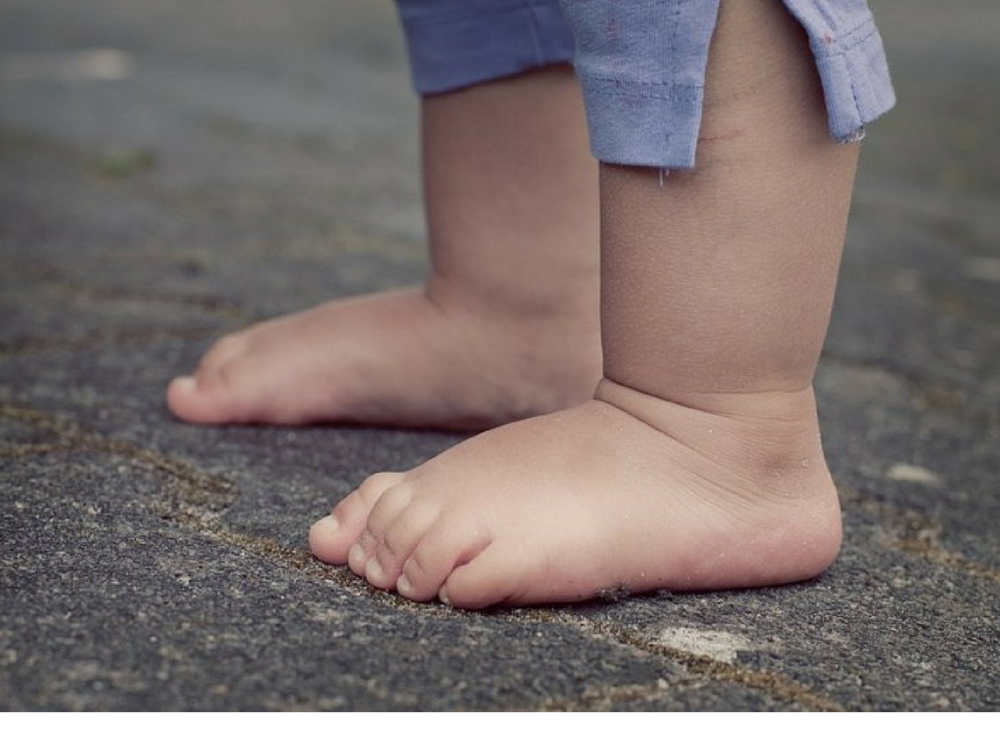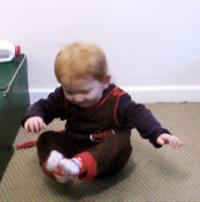hypermobility in babies ankles
The ability of a joint to move beyond its normal range of motion is joint hypermobility. Joint mobility is highest at birth there is a decrease in children around nine to twelve years old.

How Hypermobility And Low Muscle Tone Affect Your Baby S Development Skills For Action
Rarely mild joint swelling may come and go but does not tend to persist.

. Of these 100 children 94 met the Brighton criteria for Joint Hypermobility Syndrome and 90 met the Villefranche criteria for Ehlers-Danlos Syndrome-Hypermobility Type Of the entire cohort 50. In adolescent girls there is a peak at the age of fifteen years after this age the. This affects the sensitivity of the stretch receptors and the muscles readiness for action.
Children with hypermobility Beighton score 49 were recruited for a longitudinal study from The Childrens Hospital at Westmead in Sydney Australia. This happens when the connective tissue which makes up the joint structures capsule and. Foot and ankle complaints are common in people with hypermobility.
However some children have a condition called Joint Hypermobility Syndrome or JHS. Hypermobility in babies and toddlers. In addition to hypermobile joints a child with JHS may also have.
HSDs are the diagnosis where the main or only symptoms are exercise-related pain together with joint hypermobility. Sensible footwear choices are extremely important and simple changes here can make a significant difference to many people with hypermobility. Joint hypermobility can differ between individuals depending on their genes age and race.
It is sometimes referred to as being double jointed and is quite common about 1 in 10 people are hypermobile. Increased vulnerability to injuries sprains and strains. Flat feet and ankles that roll inward or pronate.
This happens when the connective tissue which makes up the joint structures capsule and ligaments is more compliant more easily stretched than usual. Children or young adults with hypermobility have joint pain. As she got older she would sit in the w position and sleep with her legs in the same position shes now 7 and has problems running her feet ankles and hips are turning and we only got a dx of hypermobility a month ago as the GP would not listen to me shes now waiting for physio and insoles for her shoes shes also having OT weekly.
Benign hypermobility describes a child that has several joints that are more flexible than usual. This is an advantage to some children and tends to be associated with being good at sport. We would postulate that unusual or excessive exercise leads to minor injury or repetitive strain to musculotendinous or ligamentous structures in the lower limbs which are noticed.
Unstable ankles and overly flexible feet can benefit from greater control provided by the shoe and the impact of overloaded joints and soft tissues can be offset to a significant degree through the judicious use of shock-absorbing. Baseline data included Beighton score BMI for age Star Excursion Balance Test SEBT Foot Posture Index FPI anterior drawer subtalar. Most people with hypermobility will not find a genetic cause but early identification means that steps can be taken to minimise injury.
The pain is more common in the legs such as the calf or thigh muscles. It might affect the fingers and hands. Frequent tripping or falling.
Joint hypermobility without pain occurs when children have stretchy or flexible joints but without exercise-related pain. Generalised joint hypermobility is quite a common occurrence - in fact it is just a normal. The term benign hypermobility joint syndrome BHJS is a common source of joint or muscle complaints that often cause concern for parents children and school personnel.
As children with hypermobile joints require added support around the heel and ankle the shoes should have a closed solid and ideally high heel cap. Joint hypermobility in babies and children is even more common and usually causes no problems. It most often involves large joints such as the knees or elbows.
For most children hypermobility affects just the joints. However in some people hypermobile joints can cause joint pain and result in higher rates of. Possible delayed gross motor skills.
Joint hypermobility happens most often in children and reduces with age. In most people this causes no problems and does not require treatment. Benign Hypermobility Ehlers Danlos syndrome Marfan Syndrome Muscle hypotonia Osteogenesis Imperfecta Rheumatoid.
Infants with joint hypermobility have joints that are able to bend further than usual and a trunk and limbs that appear to be floppy and weak. Some common symptoms experienced by children who have joint hypermobility include. One way to check if the heel cap is solid is by pressing your thumb against the back of the shoe approximately 1 cm above the sole.
Joint and muscle pain. In infants with joint hypermobility the connective tissue that holds the muscles together and connects the muscles to the bones via the tendons is very pliable. Braces for the older child involved in sport soft braces to protect knees or ankles are sometimes recommended.
The knee ankle and shoulder are the most commonly affected joints in children. That joint hypermobility should more frequently occur in children than in adults is undoubted. When we are babies we are very flexiblewhich is perfectly normaland this flexibility usually reduces as we age.
Some children as are also. The term generalised joint hypermobility GJH is used when a child has several joints that are more flexible than usual. Hypermobility can be associated with recurrent pains at the end of the day or at night in the knees feet andor ankles.
This is normally attributed to the stabilization of joint collagen that occurs as a result of increased cross-linking between adjacent molecules as disulphide bridges form with ageing. If the sensitivity to stretch is very low the muscles are slow to respond and they appear to be weak and floppy. In infants with joint hypermobility the connective tissue that holds the muscles together and connects the muscles to the bones via the tendons is very pliable.
If you cannot make a dent with your thumb the shoe has a solid. The late Dr Barbara Ansell frequently stated that hypermobility is tricky in children. Being extremely flexible and having pain associated with this flexibility could indicate that your child is hypermobile.
The increased range of movement at the joints sometimes called joint laxity or being double jointed is due to differences in the connective tissue that forms the joint capsule and ligaments. Abnormal walking patterns also known as gait. Joint mobility is highest at birth there is a decrease in children around nine to twelve years old.
Hypermobility in the joints of the feet and ankles may cause the feet to roll in giving an excessively flat-footed appearance. Joint hypermobility and musculoskeletal injury. It is not unusual to have a few hypermobile joints.
Joint instability and injury is more common in people with joint hypermobility. But when hypermobility causes pain it could point towards joint hypermobility syndrome which needs to be treated. This can be very common in children 10-15 and usually decreases with age.
Physiotherapy For Children Provided By Kidsphysio In Milton Keynes Bedford Flitwick Ampthill Hypermobility

Joint Hypermobility Kids Adults My Footdr

Hypermobility In Children The Real Deal Youtube

How To Figure Out If Your Child Has Flat Feet The Best Shoes For Children With Flat Feet Fitting Children S Shoes

Understanding Hypotonia Lower Extremity Review Magazine

Pioneer Podiatry Portal Flat Feet In Kids

What Is Hypermobility In Babies Children Young Adults Therapy Stars

Hypermobility Syndrome Therapies For Kids

What Is Hypermobility In Babies Children Young Adults Therapy Stars

How Hypermobility And Low Muscle Tone Affect Your Baby S Development Skills For Action

My Child Is Very Flexible Is This Normal Sole Motion Podiatry

How To Recognise Joint Hypermobility In Your Child My Strong Little Body
All About Out Toeing First Step Pediatric Therapy

How Hypermobility And Low Muscle Tone Affect Your Infant S Development Low Muscle Tone Pediatric Physical Therapy Muscle Tone

Steps Charity Worldwide How Healthy Are Your Baby S Hips Please Share 5 Way To Check Your Babies Hips Dislocated Hips Are Not Visible Or Painful And Can Go Undiagnosed Early Detection

Hypotonia Why Milestones Are Harder For My Third Baby Cando Kiddo Hypotonia Hypotonia Baby Pediatric Physical Therapy

How Hypermobility And Low Muscle Tone Affect Your Baby S Development Skills For Action

How Hypermobility And Low Muscle Tone Affect Your Baby S Development Skills For Action
